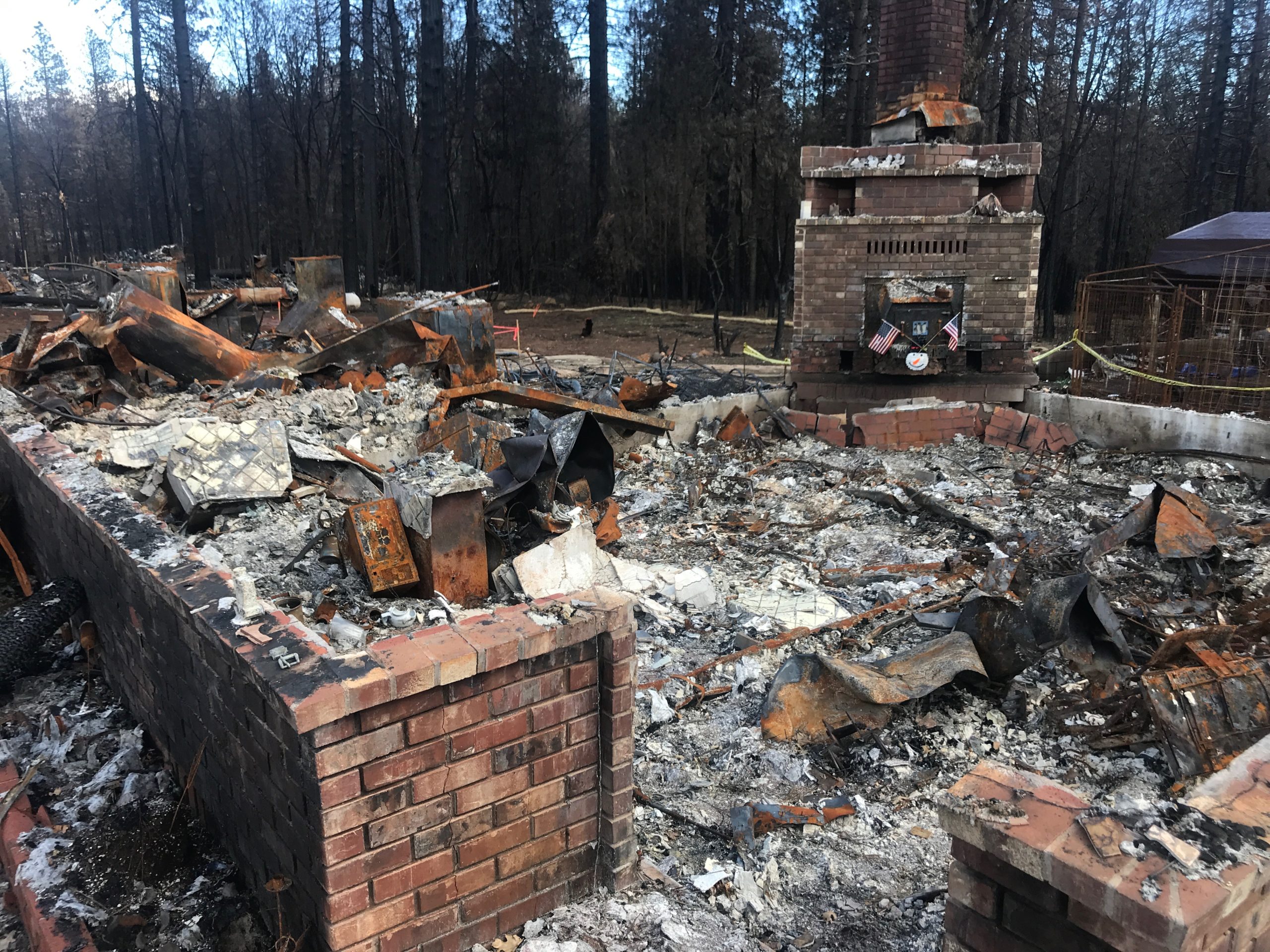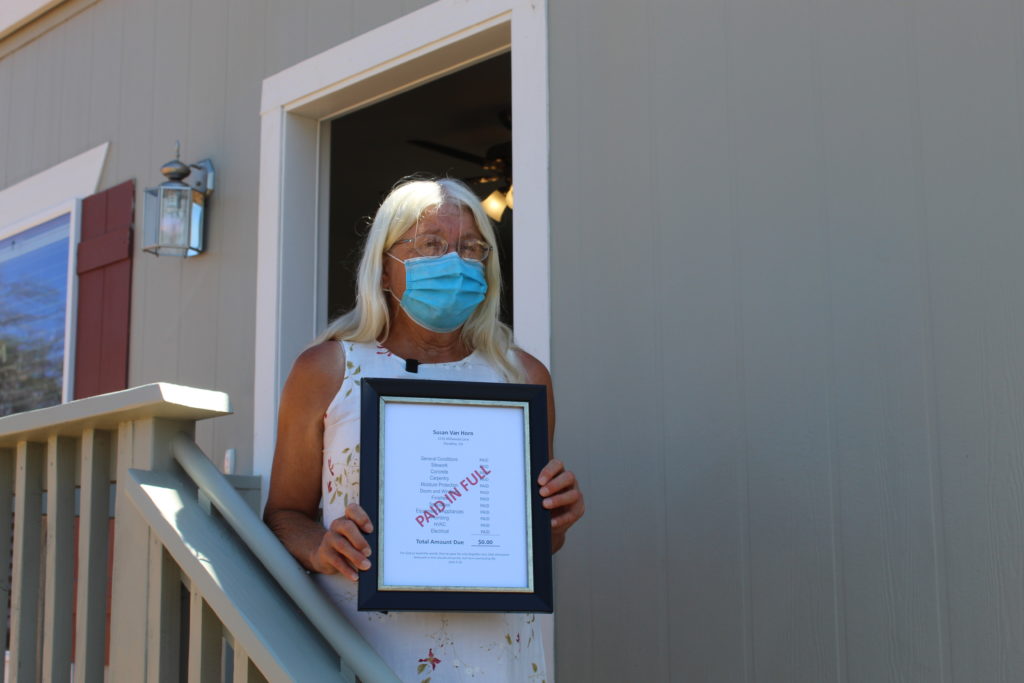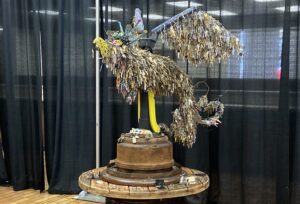Disaster Philanthropy Playbook

The Camp Fire – North Valley Community Foundation
The Camp Fire was the deadliest and most destructive wildfire in California history – and it did nearly all of that damage in a single day. It started just before 7 a.m. on Nov. 8, in a place with no homes nearby, located in the middle of nowhere. Driven by winds, including those created by the fire, it spread at the rate of a football field every second. The fire killed at least 85 people and displaced roughly 54,000 people from their homes. It took 17 days to control the fire.
Paradise, a small town in Butte County located about 85 miles north of Sacramento, ordered all 26,000 people to evacuate with just a moment’s notice. Some people never received the orders. Cell towers and phone systems failed. Power was out in a lot of places, too. By early afternoon, the fire had incinerated 14,000 homes, most of the town of Paradise and significant chunks of the foothill communities of Magalia, Concow and Butte Creek Canyon.
The Camp Fire was the most destructive and deadliest fire in California history. It was also the world’s most expensive natural disaster in 2018 based on insured losses.
Officials estimate that the fire caused approximately $16.5 billion in damages, 25% of which was uninsured properties. Pacific Gas and Electric Company (PG&E) accepted blame for the faulty transmission line and, after filing for bankruptcy, made a $13.5 billion settlement to those affected by the Camp Fire and other wildfires. The utility company pled guilty to 84 counts of involuntary manslaughter on June 16, 2020.
Supporting Relief and Recovery
The Center for Disaster Philanthropy (CDP) contributed a $500,000 grant to the North Valley Community Foundation (NVCF) after the Camp Fire to provide staff support, training, counseling services and capacity building across Butte County schools.
In the early days of the fire, CDP also provided advice and support to NVCF to help them prepare for what was ahead.
Nearly two years later, in September 2020, CDP spoke with NVCF’s David Little, executive vice president of programs and communications, and Kim DuFour, program officer. DuFour said, “CDP’s advice made a huge difference with organizations such as ours and other funders who said don’t spend all your money right away. Our hearts were so broken, it was hard not to give it all away. We’re in it for the long haul.”
NVCF has awarded more than $35 million in grants since the Camp Fire through the Butte Strong Fund, Camp Fire Relief Fund and donor-designated funds. The Butte Strong Fund, which was a partnership between NVCF, Sierra Nevada Brewing Co. and the Aaron Rodgers NorCal Fire Recovery Fund, was set up to work alongside communities for years after the fire.

Better Prepared
In the summer of 2020, the North Complex Fire affected the same communities. NVCF was better prepared. Little said, “Unfortunately, we have gotten so much better at this than we were. We used to have seven part-time employees, now we have 21 people. We’re more efficient and we have relationships in the community. When the fire hit [in 2020] we were on the phone immediately. We got $40,000 in grants out on the same day to six organizations. Same thing with coronavirus – $1 million in grants. We couldn’t have done this with seven part-time staff two years ago.”
He added, “We know who the players are now because we’re still talking to them. When the Camp Fire hit and we were such a large disaster, we didn’t have one organization in our community that specifically responded to disasters. Now, there are 10 different nonprofit organizations that make up the core of case management and donations management. We just had 50 AmeriCorps Case Managers sworn in during August 2020.”
The Long Road Ahead
Little and DuFour said the biggest overriding concern they have had in the two years since the Camp Fire is housing. Little explains:
“You just don’t replace that housing overnight. While 320 homes [of the 14,000 that burned] have been rebuilt and occupied, the task remains monumental.”
Additionally, the COVID-19 pandemic is making relief and recovery even harder. In September 2020, 2,000 more structures – including several hundred homes – had burned from the North Complex Fire, exacerbating delays in recovery efforts. COVID-19 meant no congregate living, including shelters, but the area was also out of hotel rooms. People were sleeping on the grass in fairgrounds or parking lots and trying to get a travel trailer to have a place to go.
Post-Camp Fire, Chico – the biggest town in Butte county – went from 100,000 to 120,000 residents. In fact, every town in Butte gained residents in a county of just 220,000. Every county in the area gained residents. Just about every state is represented in the Camp Fire diaspora. DuFour said, “A lot of people just had to go to where they had family and where they could get to.”
Before the fire, a high percentage of people lived precariously in Paradise and the surrounding communities. Caregivers often lived in a room in the home of the people they served. Many others had permission to place a trailer on someone’s property. DuFour explained, “When FEMA asked for their ‘pre-disaster address,’ they didn’t have one. They couldn’t produce a bill with their name on it. That’s the population that is really struggling.”
Little and DuFour stated that the homes previously located in the Camp Fire’s burn scar area were primarily affordable and low-income housing. It was relatively inexpensive to rent an apartment. There was a lot of multi-generational housing with families living together or grandparents raising grandkids. Paradise also had 37 mobile home parks, some over 200 units in one park, representing nearly 1,700 of Paradise’s housing stock. Many people did not have insurance because they owned the home free and clear, which meant they received very little or nothing to replace their homes.
The local unmet needs committee, Little and DuFour explained, sees cases from people that received some money from FEMA, but the relief money is gone. They may have bought a car or a trailer or paid off their mortgages.

They had to survive for more than a year before they could even think about rebuilding on their lot as clean-up was taking place. Little elaborated, “Paradise is the biggest city in California that’s not [connected to a municipal sewer system]. Everyone was on septic and many of those plastic septic systems melted.” On top of that, burnt cars, trucks, the rubble of homes and contents, trees and other debris had to be removed. The toxic soil needed to be trucked out of the community.
Paradise was also a retirement community. Many people took their insurance money and left; some moved in with their children. However, a lot of people did not have these options. As a result, many are living in RVs on their lot that burned. The town has issued a deadline of Dec. 31 for people to be in a more permanent housing situation.
Helping Rebuild Stronger Communities
NVCF tried to be strategic with how they approached housing and other issues. Although it provided a lot of direct assistance, it also wanted to create permanent changes. It partnered with Samaritan’s Purse on Welcome Home, an initiative that allows families to own a home mortgage-free. CDP, American Red Cross and Wells Fargo also supported this project.

The grant from CDP allowed them to hire school-based counselors in conjunction with the Butte County Office of Education to support trauma response and recovery. In their mid-term report in March 2020, they noted:
“Suicide and suicidal ideation became much more of a concern starting in late Fall, then growing over the next several months. It started in Paradise initially, but then appeared in four other districts in the county. … The continuing magnitude of the recovery is both daunting and hopeful. Because of the initial terror and trauma experienced by so many, followed by the continuing sense of loss and uncertainty about the future, we gain new insights into needs every week. For example, the Paradise Unified School District is reporting more than double the typical suspensions and expulsions due to increased issues with substance, vaping, and behavioral issues. School staffs have found the Employee Assistance Programs to be lacking in available resources for counseling.”
As CDP outlines in its new Mental Health, Grief and Bereavement toolkit, there’s a shortage of funding for long-term mental health, and it is one of the reasons that CDP supports mental health services.
Little and DuFour remain worried about the kids. There are 19 different counselors providing support for young people from the burn scar and in areas outside of it. The burn scar’s remote nature means children are spread out and parents have to drive them to school.

COVID-19 also moved learning online, but the Bear Fire meant that 57 students no longer had a school to go back to. Although they were provided with hotspots and Chromebooks, DuFour and Little were unsure if all students were able to grab them during recent evacuations. School also was more than just a place of learning. It is where many students accessed meals and other services.
Little said, “It’s incredible how far we’ve come because of the Center for Disaster Philanthropy and other organizations who found us. People who stood up and said you need help. We thought people in our community would step up, but people stood up from across the country for this little community they’ve never heard of. For a little while, in one November, the world was looking at us. It’s still bad, but we’d be so much worse off without the outside help. Our community is so grateful.”